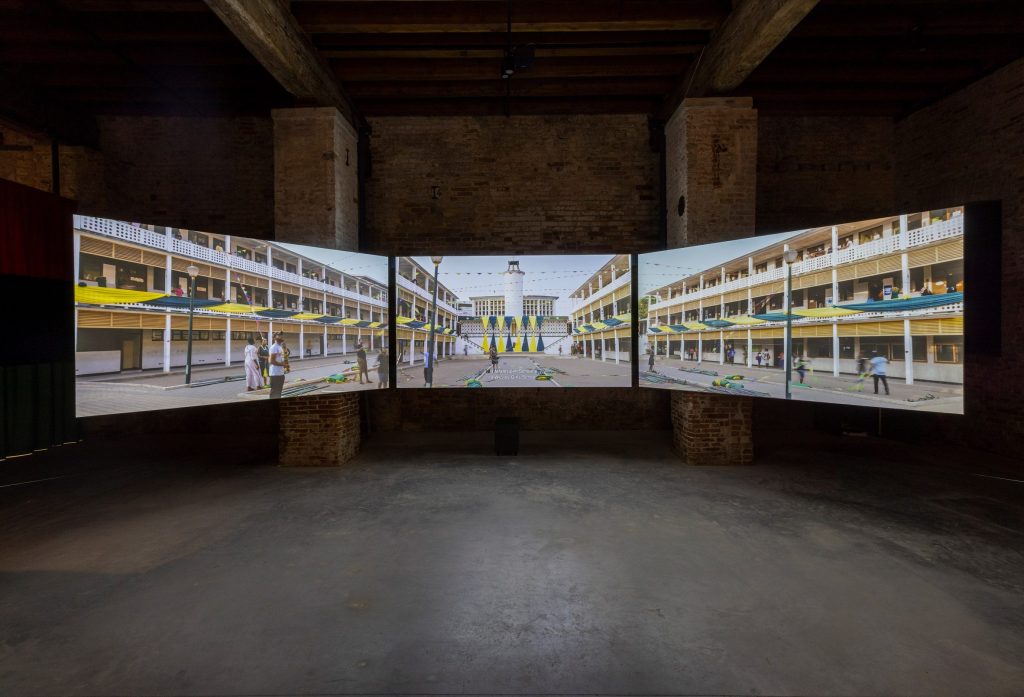
In collaboration with the Architectural Association (AA) in London and Kwame Nkrumah University of Science and Technology (KNUST) in Kumasi, the Applied Arts Pavilion at the Venice Architecture Biennale 2023 critically examines the imperial history of Tropical Modernism by analyzing the work of the Department of Tropical Architecture as well as a dozen key projects.
The pavilion looks at how this distinctive architectural style was initially created and used to propagate colonial rule before being adopted by West African architects to promote the enthusiasm and opportunities of the period after Ghana became the first sub-Saharan African country to achieve independence in 1957. This pavilion will explore how the architectural style was used to construct a narrative of colonial rule as well as how it was later embraced to celebrate the newfound freedom and optimism of the post-independence era.

The Applied Arts Pavilion, curated by Christopher Turner of the V&A and Nana Biamah-Ofosu and Bushra Mohamed of the Architectural Association (AA), focuses on the roots and evolution of tropical modernist architecture, exploring its origins and development over time.
It investigates how beginning with Ghana in 1957, the movement evolved from a tool to bolster British colonial rule across Africa to being transformed by free African states into a distinctively African form of expression. The exhibition explores the colonial roots of tropical modernism in British West Africa as well as how the movement survived in the post-colonial era, symbolizing the independence and forward-thinking nature of newly independent nations like Ghana and the pan-African aspirations of its leader Kwame Nkrumah.
In Turner’s own words, the brise soleil, or sun blocker, is regarded by him as “one of the classic attributes of tropical modernism, which adapted the International Style to the hot, humid climate of the tropics.” A 36-meter-long brise soleil was used as part of the pavilion and was inspired by the stained glass galleries at the V&A and the large plate glass slides in the Department of Tropical Studies section of the AA archive. The brise soleil, constructed out of painted metal mesh, was integral to Turner’s design, allowing light to filter through it and cast ever-changing shadows across the pavilion.

There is a film installation that culminates the exhibition, which features archival material, modern views of key structures, and interviews with Samia Nkrumah, a former politician, and daughter of Nkrumah, as well as other Ghanaian architects who collaborated with Drew, Fry, and John Lloyd of the American Institute of Architects because Nkrumah insisted that local involvement in architecture be as significant as possible. Through this fusion of cooperation and conflicting interests, Tropical Modernism became a symbol of a new Afro-centrism, influencing not only monumental buildings that celebrated independence but also universities and office buildings.
The exhibition includes the Wesley Girls’ Senior High School in Cape Coast, the George Padmore Library in Accra, and the sprawling KNUST campus, which has been described as a “Bauhaus city within the forest.” A military revolution deposed Nkrumah in 1966, harmed by the new country’s deteriorating economic prospects and increasingly dictatorial administration (‘He was a very excellent African, but a poor Ghanian,’ one interviewee says in the film).
The curators also feel that tropical modernist buildings, which used temperature-control techniques and features like brise soleils, wide eaves, and movable louvers, can offer us important lessons about how to plan for an increasingly hotter climate. The show is related to the Venice Architecture Biennale’s overarching subject, Laboratory of the Future, and its emphasis on Africa. More than half of the 89 participants at the biennale are from Africa or the African diaspora.
According to Lesley Lokko, a Ghanian-Scottish architect and the first person of African ancestry to host the Venice Architecture Biennale, Africa’s particular setting offers it “a powerful place from which to examine the issues that will dominate the next century.”
We encourage you to stay tuned to ParametricArchitecture for detailed updates on the Venice Architecture Biennale 2023.



















Leave a comment